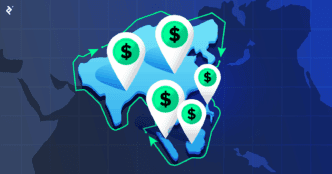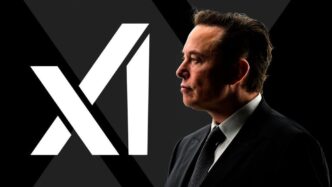Central and Eastern Europe’s startup ecosystem is booming—on paper. Valued at over €240 billion, it’s growing faster than its Western counterparts. But beneath this growth lies a quiet exodus. Nearly half of the region’s most promising startups are moving their headquarters abroad—mainly to the US (56%) and the UK (24%).
This “startup migration” has cost the region more than €50 billion in enterprise value, with companies like UiPath, Infobip, and Payhawk becoming legally foreign despite maintaining engineering hubs in the region.
The Real Reason Behind the Great Relocation
It’s not about talent. Or ambition. It’s about money.
Startups are doing what they must to survive: registering in investor-friendly jurisdictions while keeping operations in their home countries. This virtual relocation helps them access capital, win international clients, and still benefit from CEE’s deep talent pool and cost advantages.
As Delia Necula of Agista puts it, many founders aren’t abandoning CEE—they’re adapting. Headquarters may shift, but the core work often stays local. The challenge? Investors want companies in familiar legal environments. And founders, like Azivot’s Artem Potekhin, admit it’s often not a strategic choice but a necessity driven by investor demands and better tax terms elsewhere.
Still, this trend fuels a “brain drain.” Leadership and commercial teams often relocate too, draining local ecosystems of experience and growth capacity. Bobby Voicu from MixRift warns of a troubling pattern: VCs are flocking to late-stage firms, avoiding the risk of earlier-stage bets, which leads to a “barbell effect”—capital concentrates at the very start and end, while Series A and B startups struggle in the middle.
The Core Problem: A Widening Funding Gap
Late-stage capital dominates. And that’s where the imbalance begins.
In 2024, CEE startups raised €2.3 billion in VC funding, with just €442 million in Q1 2025—down 22% from the same period last year. While 74% of capital goes to late-stage firms, these rounds only account for 4% of all VC deals in the region. This gap—dubbed the “Series A cliff”—leaves early-growth startups stranded without the fuel to scale.
Sergiu Negut from FintechOS sees a pattern: as the region matures, more capital will chase scaling firms. But he’s quick to note early-stage support is improving too, with more granular investment opportunities and new regional angels emerging from successful exits.
Anastasija Plotnikova from Fideum agrees. She believes that unless more capital flows into the earliest stages—seed and Series A—CEE will lose the next wave of unicorns before they can even start.
Why CEE Needs Braver Capital, Not Just More of It
Investors love safety. And that’s the problem.
Late-stage bets feel secure, but they can starve the ecosystem of fresh innovation. Zero One Hundred’s Adam Ďrica highlights the paradox: it’s cheaper than ever to start a company—but harder than ever to scale one in CEE.
To fix this, VCs need to step in earlier. Rockaway Ventures’ Petr Šmíd stresses that if the region wants to stop losing its best companies, it must build up homegrown VC funds capable of supporting Series A and beyond. Without that, IPO rebounds or liquidity cycles won’t matter.
Dorin Boerescu of 2Performant puts it bluntly: the region has the talent and the money—it just lacks the courage to take early-stage risks. Poland, the Czech Republic, and the Baltics are making moves, but others need to catch up.
And according to Laurențiu-Victor Bălașa of TheBibleChat, this isn’t about availability of funds. It’s about mindset. Western VCs hold their bets and scale them smart. CEE needs that same long-term view.
Capital Concentration Breaks Startup Lifecycles
When late-stage money dominates, it disrupts everything else.
Antavo’s Attila Kecsmar warns this top-heavy funding flow breaks the natural rhythm of the ecosystem. Without bold capital for early-stage startups, there won’t be any late-stage winners down the road. Startups need the space—and support—to fail, learn, and try again. Safe bets don’t build empires.
CEE Startups Are Still Winning—Despite the Odds
Against all odds, CEE’s best founders are pushing through.
In just five years, 57 unicorns have emerged from the region—most with VC or growth equity backing. Many grew lean and fast, bootstrapping their way to the top. Fintech and AI continue to attract growing investor interest, while emerging sectors like cybersecurity, defence tech, and climate tech are picking up speed.
Roman Eloshvili of Estonia’s XData Group sees this firsthand. More late-stage startups are attracting global capital. Defence tech alone is expected to triple in 2025 as governments push for technological sovereignty.
Investors like DEPO Ventures’ Petr Šíma are already reallocating funds toward AI and industrial tech, acknowledging that these sectors demand larger rounds—and more strategic patience.
And not all companies are fleeing. Estonia’s Bolt and Poland’s Booksy are doubling down on sustainable, region-rooted growth. Funds like Soulmates Ventures’ new €50 million early-stage vehicle aim to plug the Series A gap and keep future winners at home.
The Path Forward: From Innovation Lab to Global Brand Engine
CEE may be bleeding enterprise value today—but it’s not all loss.
Relocation brings knowledge. And when successful founders reinvest, they bring back not just money, but experience. The region’s future won’t be built on subsidies or safe bets—but on brave capital, strategic reinvestment, and a belief that bold ideas born in Bucharest or Sofia can lead on the global stage.
Delia Necula believes by 2030, CEE will go from being an outsourcing destination to the “innovation lab of Europe.” From legal tech to climate tech, from cybersecurity to AI, the region has the potential—and the people—to build global brands.












